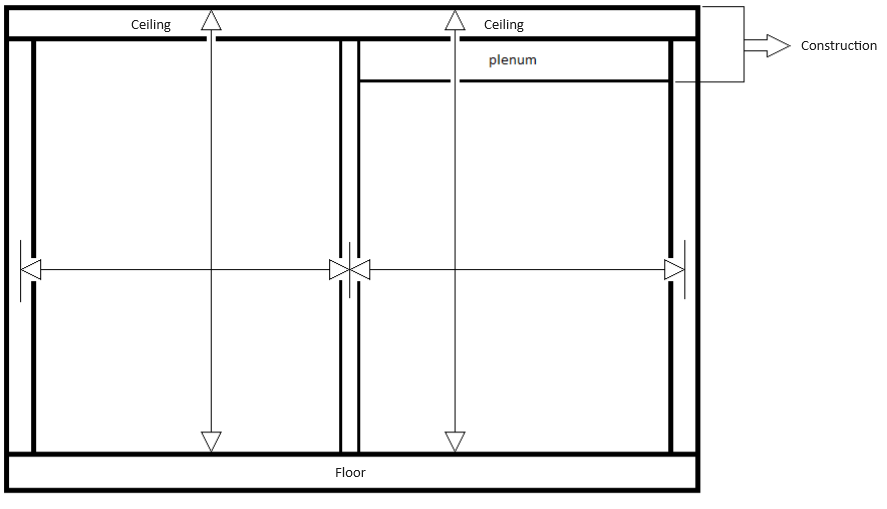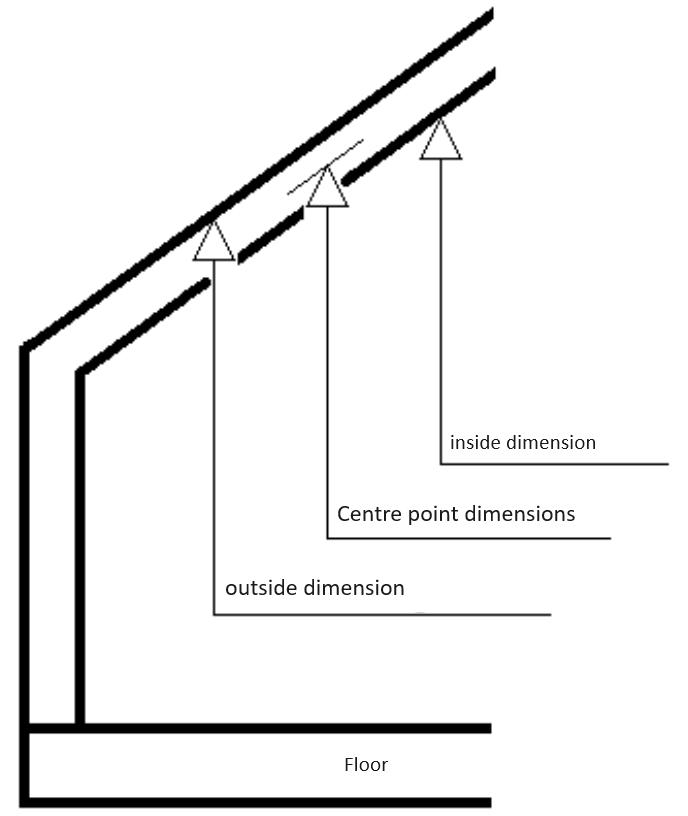Dimensions
All rooms within the geometry are specified using centre point dimensions. The only exceptions are floors and ceilings with an orientation of 180° and 0° respectively, in which the top side of both the floor and the ceiling is used.
- The height of a room is the distance from the top side ceiling / roof to top side of floor.
- The thickness of a wall is determined by the thickness of the construction. If a plenum is specified for a ceiling, this plenum is included in the construction and therefore in the thickness of the ceiling as well.
- The outside of external walls and the centre point dimensions of interior walls are used to determine the outer dimensions of a building. As before, in case of floors and ceilings the top side is used for dimensioning instead of the centre point dimensions.
Pitched roofs are considered as regular exterior walls. This means that the height of the room with a pitched roof is specified differently from a flat roof. In the latter case the external dimensions are specified, whereas the centre point dimensions are used in case of a pitched roof.
When determining the internal dimensions, the inside of all walls is taken as the measure. There is an option for ceilings to include or exclude the plenum.
Calculations of perimeters, areas, and volumes take into account the above situations. Based on the parameter, the calculation will determine the requested perimeter, area, or volume.

